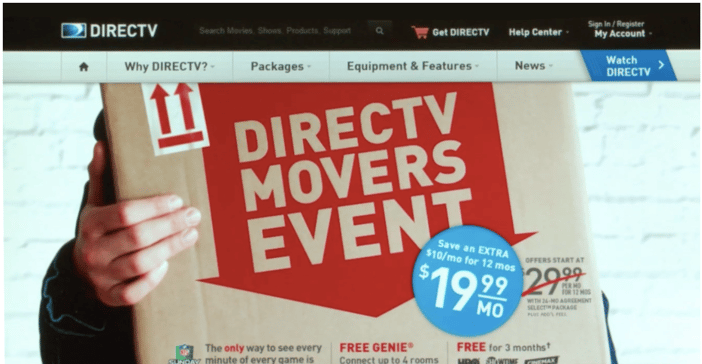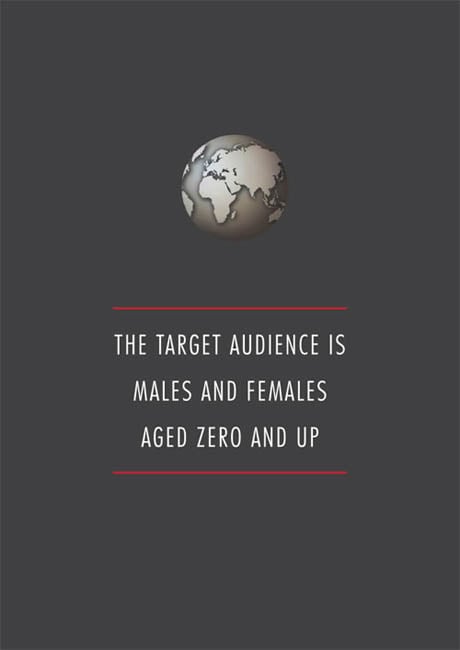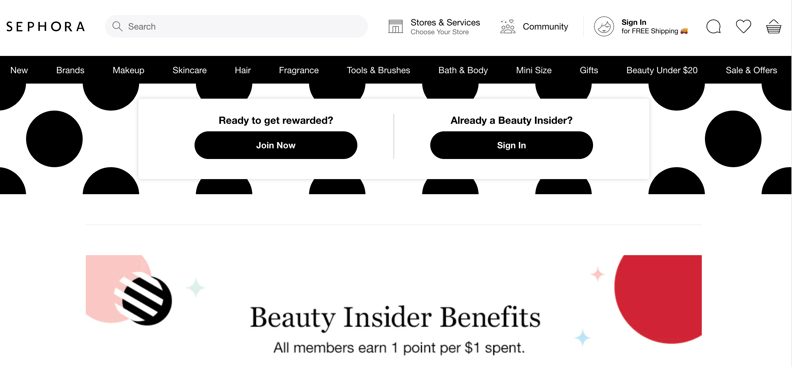Data-driven marketing trends: why you need to update your strategy & how to get started
With ever-evolving marketing trends, staying ahead of the game is more important than ever. With the right data, you can gain valuable insights into your customers and their behaviors, leading to more effective campaigns and strategies.
But far too often, companies don’t take advantage of the data they have. In fact, 87% of marketers say that data is their company's most underutilized asset. You may have data for days, but if you don’t use it, what’s the point of collecting it?
If you have data and want to know how to use it, you’ve come to the right place. This blog explores:
- What is data-driven marketing?
- How data-driven marketing differs from traditional marketing
- Why you need data-driven marketing
- 6 data-driven marketing strategies with examples
Let’s get started!
What is data-driven marketing?
Data-driven marketing is an approach to marketing that focuses on using analytics to inform decisions and optimize campaigns. Over 64% of marketers report that a data-driven approach is necessary today
Data-driven marketing examines trends, predicts behavior, and can help you develop strategies that fit the needs of your audience.
This data will help you craft tailored marketing campaigns for your customers. Ultimately, this maximizes your return on investment.
How does data-driven marketing differ from traditional marketing?
Traditional marketing involves various techniques to promote a company's goods and services. It focuses on reaching as many people as possible with a common message. To do this, companies have relied on mass media advertising to the general public.
This approach is not always accurate and efficient.
Data-driven marketing is quite different. It's much more focused on a specific kind of customer. Data-driven marketing involves gathering and analyzing unique customer data, giving you insight into what consumers want and prefer.
Why you need data-driven marketing
Marketing has always done two things: identify what customers want and then motivate people to buy. Traditionally, this has required a lot of trial and error. That’s why marketers have become increasingly reliant on data-driven marketing trends. Let’s look at the main benefits.
Data-driven marketing increases ROI
Marketers have access to a vast array of data that they can use to improve their return on investment (ROI). By closely studying the correlation between various digital marketing activities and ROI, you can be more strategic with your budget allocation. This laser focus on the most beneficial activities will lead to greater profitability in the long term.
Also, using factual data instead of a guesswork marketing strategy boosts efficiency. You can focus your marketing campaigns on audiences that are more likely to convert, maximizing your investment.
Data-driven marketing helps you customize
Speaking of personalization, data-driven marketing is revolutionizing the way businesses reach their target audiences. By leveraging data, you’re able to customize your marketing to meet the needs of a specific customer segment. This allows you to craft personalized messages that appeal to the right people so that your target audience is a bit more narrow than this:
Data-driven marketing also allows businesses to create targeted ads based on a user’s browsing history, interests, and other demographic information. This makes it easier for you to connect with potential customers, increasing their chances of conversion.
With data-driven marketing, you can get more out of a campaign by providing customers with custom content.
Data-driven marketing builds trust and loyalty
One-size-fits-all messaging is an outdated approach that customers have become increasingly unresponsive to. You must craft your messages specifically for each customer segment and cater to their needs and interests.
Doing this will help your company establish an authoritative voice in the industry. More importantly, it builds customer loyalty by establishing trust with them.
Data-driven marketing predicts behavior
As you customize content and build trust, customers will interact more often with your brand. They’ll engage with you using your website, email newsletter, social media, and app. Collecting and analyzing this data over time gives you valuable insights into the behavior of customers.
The more data you have, the greater likelihood you'll predict what they'll do next.
Of course, this predictive power is not the same as having a crystal ball. But it’s close. Data gives you a much better understanding of what your customers want and respond best to.
6 data-driven marketing strategies with examples
Your marketing strategy will determine whether you ever see these benefits. Here are six data-driven marketing trends with real-life examples to help you develop your own strategy.
1. Take an omnichannel approach
Omnichannel marketing is an approach that combines data-driven marketing with a unified customer experience across all channels (social, web, newsletter, chat, etc.).
It provides these advantages:
- Seamless journey across all platforms and devices
- Consistent customer service
- Streamlined payment processes
- Identifiable branding and tone
- Personalized messages based on customer preferences
- Content informed on past experiences and current stage in the customer journey
Sephora's Beauty Insider Rewards program has established itself as the benchmark in customer loyalty. It’s also a major part of their omnichannel strategy.
Customers can access news, products, and promotions on Sephora's website, mobile website, mobile app, and even in-store. Beauty Insiders can view their favorite list, past purchases, and rewards points, scan items in-store to find different alternatives available online, watch instructional videos, and nearby find stores--whether they're on a smartphone or a computer.
This omnichannel strategy has resulted in 11 million members who spend an average of 15 times more than other Sephora customers.
2. Take advantage of AI
With the use of AI, marketers are more easily able to create and customize content. AI can help with optimizing ad bidding, targeting specific audiences, customizing web experiences, and analyzing phone conversations in bulk.
One of the more impressive ways to use AI is through augmented reality (AR). AR shows what a product looks like in a space or on a person's body. Magnolia Market, owned by Chip and Joanna Gaines, recently partnered with Shopify to bring AR to their app.
You might not be as big as Magnolia. And that’s okay. AR may still make sense for you. Another AI that may be more practical is a chat box for your website.
Probably the most game-changing use of AI is still relatively new.
ChatGPT, a natural language processing tool, is making rapid changes to the field of market research. Market research has always been a time-consuming affair for companies because there is inevitably a lot of data to go through.
ChatGPT serves as a great tool to have in your corner because it helps save time when it comes to analyzing data, creating surveys, and coming up with insights on customer behavior and trends.
That is not to say that market research professionals can be replaced by the tool but rather that they can focus their energies on more important tasks like enhancing the final ideas rather than spending hours crouched over large amounts of data.
With 84% of marketers now using AI, it’s time to consider it if you haven’t yet. It might help you gain a competitive edge while saving you time and money.
3. Segment your Audience
Consumer segmentation is a powerful tool to identify and understand distinct demographics. It provides valuable insights into consumer behavior and preferences.
Segmenting your audience allows you to customize content and online interactions according to the consumer’s demographics, purchase history, and web activities. Knowing about a user's interests helps create more personalized experiences for them.
DirecTV capitalized on the fact that people are more likely to try new services when they move. They used USPS data to create a modified homepage that would be visible only to those who had recently moved.
With some A/B testing, DirecTV found that their personalized marketing won out over a traditional approach. In version A (the regular home page) they offered a $300 gift card offer plus $10 off for 12 months to anyone who started service.
In version B, people who had moved saw a custom homepage. They were still offered the $10 off service in this version, but not the $300 gift card. Version B’s home page looked like this:

Not surprisingly, they had a better conversion rate on the personalized page. The best part is that they didn't have to shell out a $300 gift card to those customers.
DirecTV’s data-driven marketing strategy saved them money and increased their conversions. The lesson? General content isn’t as effective as content for segmented audiences.
At Audiense, we can help you learn how to segment your audiences. Try our Audiense Insights for free to get started.
4. Generate relevant content
“Content is king,” Bill Gates wrote back in 1996. And it’s still true. But it has to be the right content, at the right time, for the right people.
Generating relevant content can be challenging and time-consuming. That is why data-driven marketing has become so popular in recent years.
With the help of data, marketers can identify the needs of their target audience and create content that resonates with them. By understanding what topics are trending and what type of content is popular, marketers can create data-driven content that engages and converts.
Zillow analyzed the listing descriptions of 24,000 homes and found that listings with certain keywords tend to sell for more than expected. So they wrote an article about it and published it in the “Tips and Advice” section of their blog.
When you think about the information available to you, how can you use it to generate valuable, relevant content for your customers?
5. Use predictive analytics
Predictive analytics relies on existing information to estimate what could take place. You use predictive analytics whenever you look at historical consumer data and anticipate trends.
Marketers can use insights from consumer interactions to gain valuable insight into their interests and preferences. This information can then create targeted audiences for campaigns, based on demographic data and interest groups.
Predictive analytics also lead you to strategically optimize throughout the year.
Consider a company like Akrobat Trampolines that sells in-ground trampolines. In-ground trampolines mean digging for installation. This isn’t a great winter activity for cold climates. Akrobat, like other seasonal-oriented companies, can use consumer data to drive decisions on when to run campaigns, targeted ads, and sales, rather than relying on their gut or guesswork.
You can use data to predict a lead’s likelihood of moving down the sales funnel toward purchasing simply because they saw an ad at the right time.
6. Pay attention to SEO and site performance
Finally, don’t neglect the role of your website in data-driven marketing. It’s the front door to your business in a digital world. Two key elements are important.
First up, your SEO. Don't think of focusing on SEO in the traditional sense of meta descriptions and headers. Predictive SEO is about anticipating what consumers may need in the future, rather than relying on existing data. Doing this enables you to predict search engine trends and optimize your website to create content that will help you achieve a better Google ranking in the long run.
Second, an often-overlooked element of your online conversion rates is site performance. Just because someone finds you and lands on your page doesn’t mean you'll make a sale. The first five seconds of page load time have the highest impact on conversion rates. Your web hosting infrastructure and site design must be able to handle traffic and user browsing behavior.
Don't neglect it. Otherwise, all your other data-driven efforts will be in vain.
Key takeaways
It’s essential in today's competitive business environment to stay up-to-date with marketing trends. By leveraging data, you can gain a better understanding of customer interests, behaviors, and preferences, helping you to create tailored campaigns that meet their needs.
We covered a lot of ground in this article. Let’s recap the key takeaways.
Data-driven marketing relies on the use of customer data, leading to more focused tactics. Traditional marketing, on the other hand, seeks to reach as many people as possible with a broad message.
Data-driven marketing has tremendous benefits. Using a data-driven strategy increases your ROI, allows you to customize your content, builds trust and loyalty with customers, and helps you predict customer behavior.
To see these benefits happen, use these 6 data-driven marketing strategies:
- Omnichannel communication
- Artificial intelligence
- Audience segmentation
- Data-driven content
- Predictive analytics
- Predictive SEO and site performance
This is a lot to take in. If you’re ready to take your marketing to the next level, a good place to start is getting to know your audience.
With Audiense Insights, you can better understand your audience and what they care about. It will help you learn personality traits, demographics, sources of influence, and more so you connect in a meaningful way. Request a free demo to get started today.








